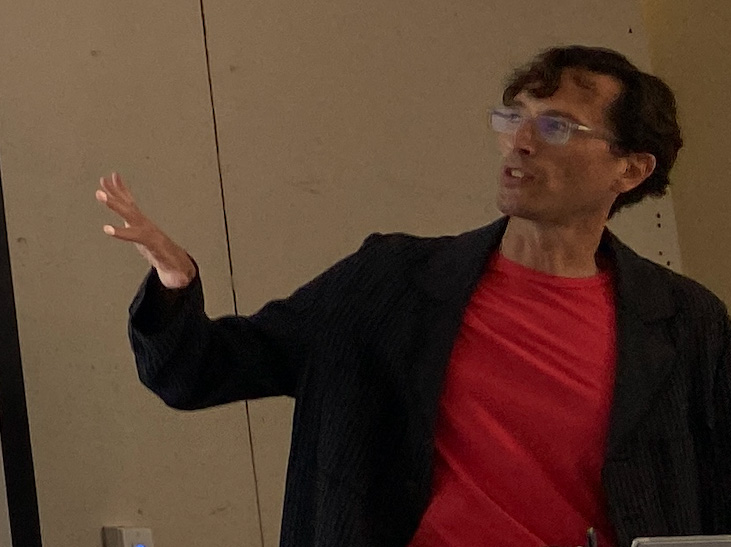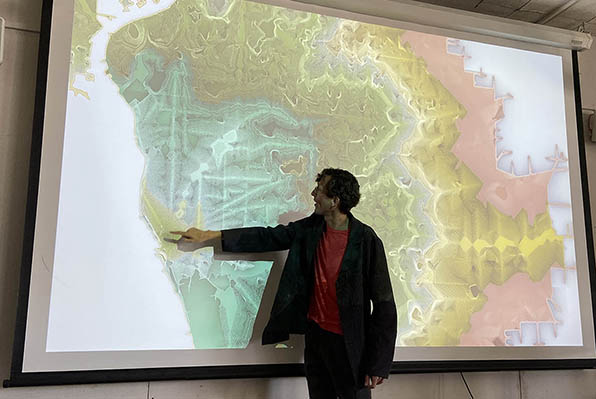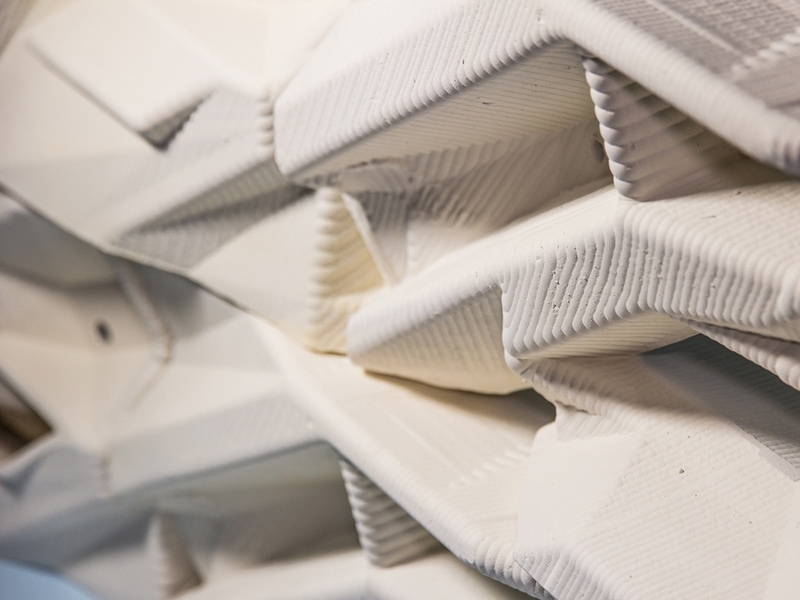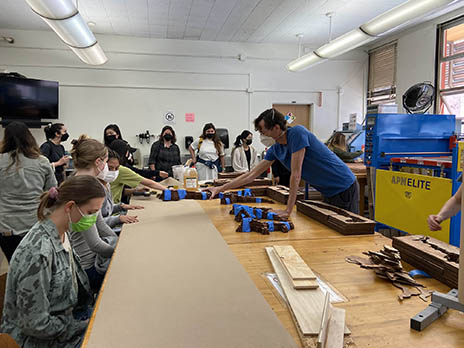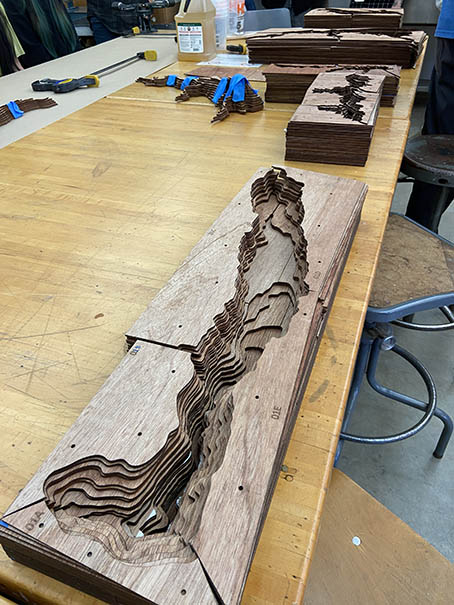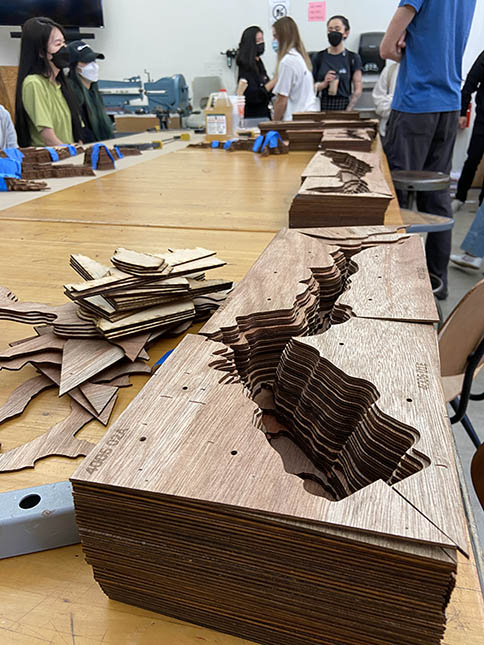Lecture
Artifacts, Data, and Otherwise
Joshua Stein introduced his practices on data exploration using digital techniques and ceramic materials. He explained his studio, Radical Craft, and various projects, including Isochronic Mountain Buffalo, the Geological Atlas of the Built Metropolis, and Quarry Cast. Isochronic Mountain Buffalo is a topographic model that documents the collective time devoted to moving from the periphery of the city to its center, specifically Buffalo City Hall. The Geological Atlas of the Built Metropolis reimagines the city’s seemingly discrete architectural objects as a continuous geological landscape that traces material trajectories backward in space and time, suturing the city with the sites of extraction and production and the laboring populations it has historically attempted to push outside its identity. This Quarry Cast identifies the large-scale, land-form sculptures inadvertently created through the human process of mineral extraction as it “liberates” a precise form from the “overburden” of the surrounding landscape.Laurie Frick’s lecture focuses on using data about mood, exercise, and personality to turn them into vibrant, carefully crafted art using various materials. The results look like abstract paintings and beautiful sculptures. Laurie wants to help create a future in which self-delusion is impossible. She thinks this shift is inevitable once people wake up to the transformational power of big data. In her lecture, she also introduced the public arts she created. Data may seem abstract, but Laurie aims to make it personal. She says the moment in time where the data that’s gathered about us is astronomical. Her lecture enlightened SJSU students about how data can turn into not only beautiful art pieces but visually compelling measurements of personal narratives through big data.


